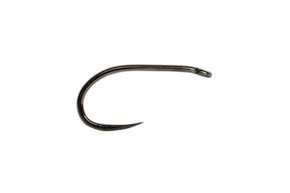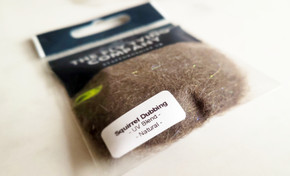Origin and History
The Tup’s Indispensable is a classic dry fly, created in the early 20th century by Devon pharmacist R.S. Austin. Austin developed the fly to imitate pale upwinged duns and spinners, using an unusual blend of wool, seal’s fur, and hair from the ear of a tup (ram). The pattern quickly earned a reputation for fooling selective trout on chalkstreams, particularly during pale wateries and pale olive hatches. Its pale pinkish-yellow body has become iconic, and although modern substitutes are now used, the Tup’s remains a cornerstone of traditional English dry fly fishing.
Materials
- Hook: Dry fly hook, sizes 14–18
- Thread: Primrose or yellow thread
- Body: Mixture of wool, seal’s fur, and cream/pink dubbing (modern substitute blends)
- Wing: Honey dun or light blue dun cock hackle tips, tied upright and divided
- Hackle: Light honey dun or blue dun cock hackle
Popular Variations
- Tup’s Spinner – tied with spent wings for spinner falls
- Tup’s Emerger – low-riding version with CDC wing
- Hotspot Tup’s – adds a small fluorescent rib or tag
- Tup’s Nymph – dubbed body with soft hackle for sub-surface presentation
- Micro Tup’s – tied as small as size 20 for finicky fish
Step-by-Step Tying Guide
- Attach thread at the hook eye and run down the shank.
- Dub a slender body using the Tup’s blend (or modern substitute), tapering slightly towards the thorax.
- Prepare a pair of honey dun or light dun hackle tips, tie them upright and divided for the wings.
- Select a light honey dun cock hackle and tie in just behind the wings.
- Wind 2–3 turns of hackle to form a neat collar, sweeping fibres evenly around the body.
- Whip finish behind the eye and add a touch of varnish.
Seasonality & Representation
The Tup’s Indispensable is most effective from late spring to early autumn, particularly during hatches of Pale Wateries, Pale Morning Duns, and small upwinged olives. Its pale body and delicate wing silhouette make it a go-to pattern for clear chalkstreams and low, slow rivers where trout are highly selective.
Tackle and Setup
- Rod: 8–9ft, 3–4wt for fine presentation
- Line: Floating line
- Leader: 10–14ft tapered, 5–7X tippet
- Setup: Fish singly to rising trout, presented with a drag-free drift
Summary Table
| Aspect | Details |
|---|---|
| Origin | R.S. Austin, Devon, early 20th century |
| Best Seasons | Late spring to early autumn |
| Represents | Pale Wateries, Pale Olives, small upwinged duns |
| Hook Sizes | 14–18 (micro 20) |
| Tackle Setup | 8–9ft rod, floating line, 10–14ft leader |












